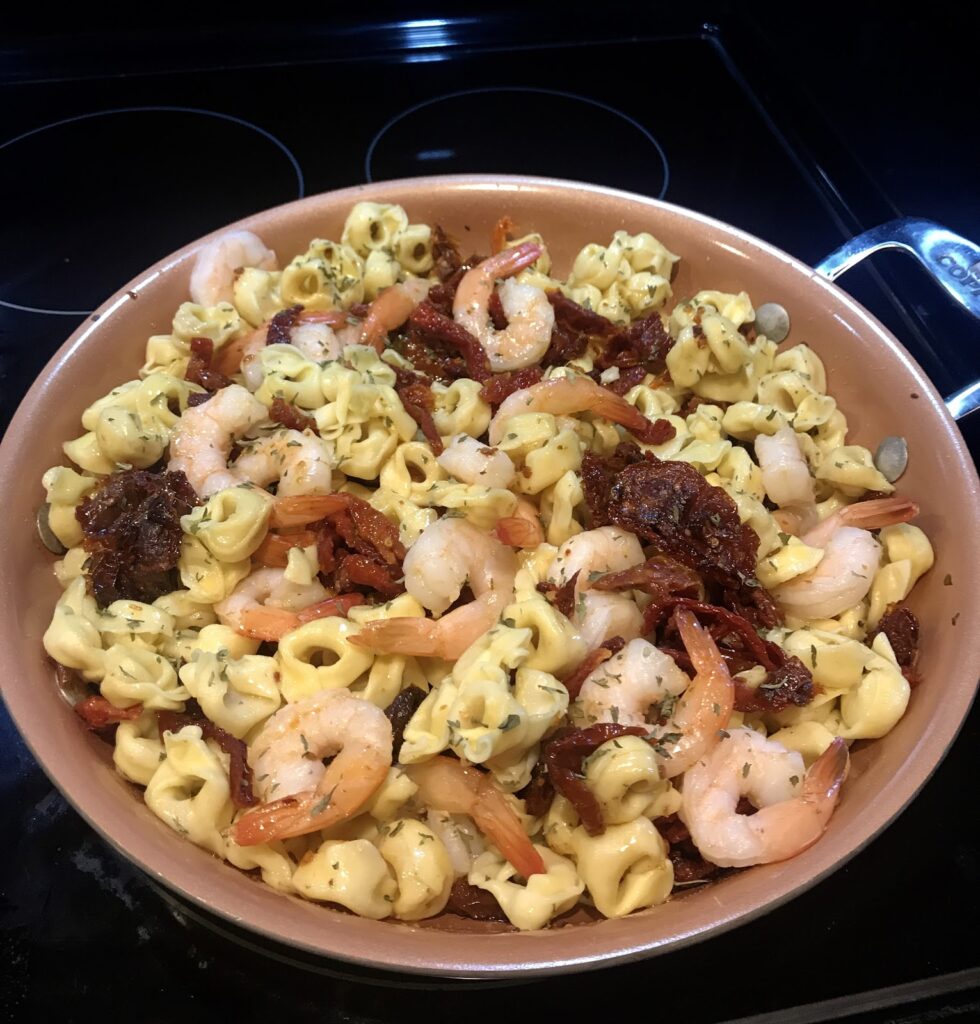
In the quest to eat healthy (with or without diabetes), embracing a Mediterranean eating style can be a helpful approach. In fact, in our last blog post you’ll find the highlights from the new consensus report on nutrition therapy for adults with diabetes or prediabetes which confirms that the Mediterrannean eating pattern, along with a variety of others, can help people with or at risk for diabetes to eat healthier and be healthier.
We are personal fans of the Mediterranean approach. We enjoy the flavors, variety and health benefits (of course)! So, we want to share a few practical tips that have worked for us, as well as clients we have coached over the years. But first…
What exactly is Mediterranean style eating?
Traditional Mediterranean meals feature foods grown all around the Mediterranean Sea, and emphasize foods that are minimally processed, seasonally fresh, and locally grown. Focus is on including the following:
- Plant-based foods, including vegetables, beans, nuts and seeds, fruit, and whole grains.
- Fish and other seafood (small amounts and limited frequency of red meat)
- Olive oil as the main dietary fat
- Dairy products (mainly yogurt and cheese) in low to moderate amounts
- Fewer than 4 eggs per week
- Fresh herbs and spices for flavor
- Wine in low to moderate amounts
- Water as the go-to beverage
- Infrequent use of concentrated sugars or honey
Does this peak your interest? If so, are there some of these foods that you already like and eat, that you could swap in more often to begin eating “more” Mediterranean?
There is no one “right way” to eat Mediterranean style. If you are interested in eating “more” Mediterranean, here are 6 small steps to get you started.
6 steps to start eating more Mediterranean
- Eat fish at least twice each week. Fresh or water-packed tuna, salmon, trout, mackerel, and herring are good choices.
- Fill at least half of your plate with Mediterranean style non-starchy vegetables which include the following: artichokes, arugula, beets, broccoli, Brussels sprouts, cabbage, carrots, celery, celeriac, chicory, cucumbers, eggplant, fennel, greens, leeks, mushrooms, nettles, okra, onions, peas, peppers, potatoes, radishes, rutabaga, scallions, shallots, sweet potatoes, tomatoes, turnip, and zucchini. Vegetables are a staple of the Mediterranean eating pattern.
- Replace butter and margarine with healthful oils such as olive or canola oil. Use these oils for cooking, dip bread in flavored olive oil, or lightly spread olive oil on whole-grain breads.
- Choose whole-grain breads and cereals, as well as whole-grain pasta and rice products.
- Season meals with herbs and spices rather than salt.
- Snack on small servings of nuts or seeds instead of snack foods. Deb likes pistachios so has small zip-top bags of them on her desk at work, in her travel bag, and in her car for quick snacks! Perfect for plane travel too!
The Mediterranean eating style is not low fat, but rather rich in heart healthy monounsaturated fat from plant sources such as olives and nuts. Here are some of our favorite swaps to make the switch to high quality Mediterranean fats…
4 simple swaps to healthy Mediterranean-style fats
- Top whole grain toast with almond butter or peanut butter rather than butter. Natural nut butter is preferred (rather than the kind with added fat). If you have trouble with the nut butter separating, screw the lid on tightly and store the jar upside down. That way when you turn it right side up to open it, the oil will be in the bottom rather than on the top.
- Mash and spread avocado on a sandwich rather than mayonnaise.
- Lightly dip crusty bread in olive oil rather than slathering with butter.
- Try almond milk on your morning cereal rather than dairy.
We’ve found that seeing how all of this could come together in the form of an actual meal is helpful too. Here are some ideas to spark your thinking on what might work for you:
Like yogurt for breakfast? Try plain Greek yogurt topped with chopped figs, unsalted pistachios and a light drizzle of honey
Savor a sandwich at lunch? What about a whole wheat pita stuffed with hummus, salad greens, and tuna, dressed with olive oil and fresh lemon juice; and a date stuffed with almond butter for a sweet bite
Trying to fit in more fish at dinner? Go for grilled trout; tomato, cucumber and arugula salad with lemon olive oil vinaigrette; steamed broccoli; couscous; watermelon; and a glass of red wine (if you choose to drink wine)
Searching for a snack? Grab a nectarine or peach; or walnuts or almonds for a no carb option.
The Mediterranean eating style is easily adaptable to today’s busy lifestyle. We hope you enjoy one of our favorite Mediterranean style recipes which follows. It’s super easy, colorful, and packed with flavor! And only has 2 ingredients! (We confess that just talking about this for the blog made us hungry for it, and required a run to the market for dinner!)
You can print our recipe card below for Two Ingredient Sun-Dried Tomato and Shrimp. (Deb likes the Bella Sun Luci brand of sun dried tomatoes that she buys at Costco or Amazon)
TWO INGREDIENT SUN-DRIED TOMATO AND SHRIMP

Quick and easy yet tasty 2 ingredient shrimp recipe
Ingredients
- ½ cup julienne cut sun dried tomatoes in olive oil and Italian herbs
- 3 ounces (6-7 large) cooked shrimp (we buy the fully-cooked frozen version and thaw under cool running water or purchased pre-cooked shrimp in the deli area)
Instructions
- Rinse shrimp (thaw if frozen).
- Heat 1/2 cup of sun dried tomatoes in olive oil in a sauce pan or skillet until warm.
- Add shrimp and stir until shrimp are warm.
- Serve and enjoy, that's it!
Notes
If you prefer, and have time, you can make your own sun dried tomato sauce with fresh tomatoes, sun dried tomatoes, garlic, olive oil and herbs.
Recommended Products
As an Amazon Associate and member of other affiliate programs, we earn from qualifying purchases.
A favorite variation: With summer produce arriving, another favorite variation is to mix diced fresh tomatoes, diced sun dried tomatoes, and fresh garlic in a skillet with hot olive oil and toss until tender. Add a squeeze of fresh lemon juice to brighten the flavor, and coarse ground salt and black pepper to taste. If you have fresh parsley or basil, chop and stir in before serving.

Rounding out this Mediterranean-style meal: Enjoy the shrimp and tomatoes alone, over steamed spiralized zucchini, or with a side of green vegetables as a light low carb meal. Salad greens topped with Kalamata olives, a sprinkle of Feta cheese, and a drizzle of olive oil and Balsamic vinegar rounds out a quick meal. You can also serve the tomatoes and shrimp over quinoa, a whole grain pasta, or small cheese tortellini if you want a more hearty meal and carbs aren’t a concern for you.

The summer months are perfect timing to begin embracing a more Mediterranean eating approach with the bounty of fresh produce from summer gardens. What Mediterranean style foods are you already eating? How can you fit those in more often?
Subscribe to our blog and we’ll email you when a new post is published!
Follow us on Twitter and Instagram @AFreshPOVforYou.
Disclaimer: A Fresh POV for You is a participant in the Amazon Services LLC Associates Program, an affiliate advertising program designed to provide a means for sites to earn advertising fees by advertising and linking to amazon.com.

